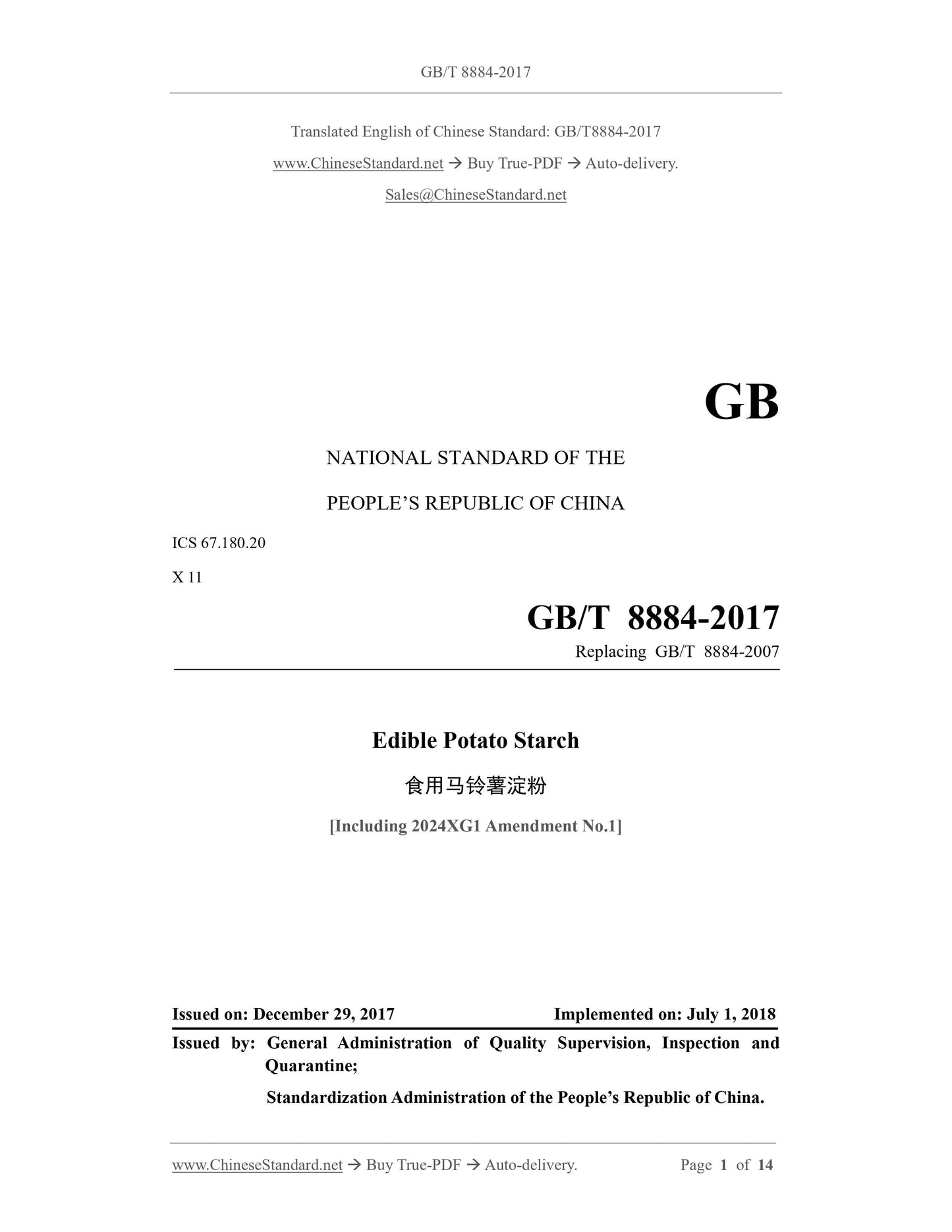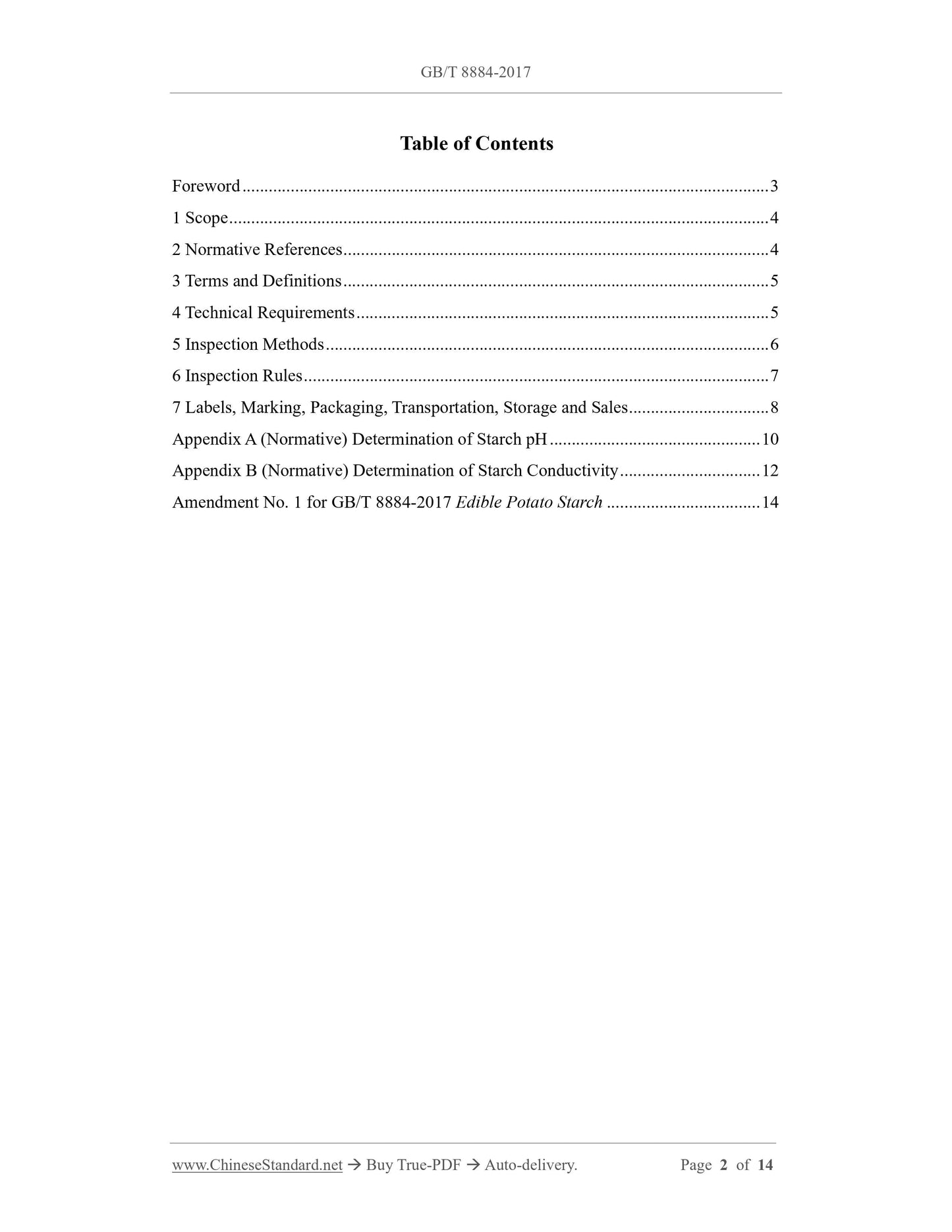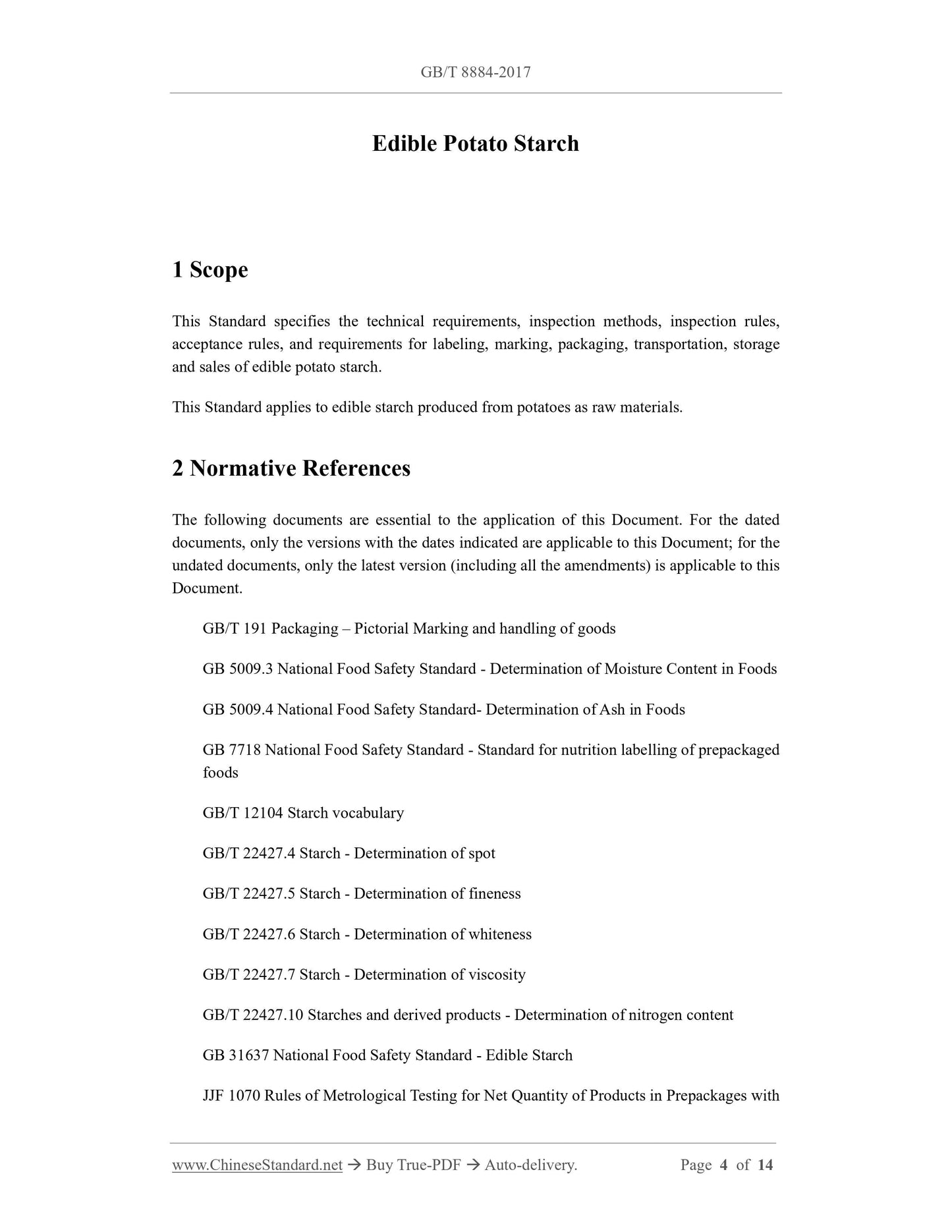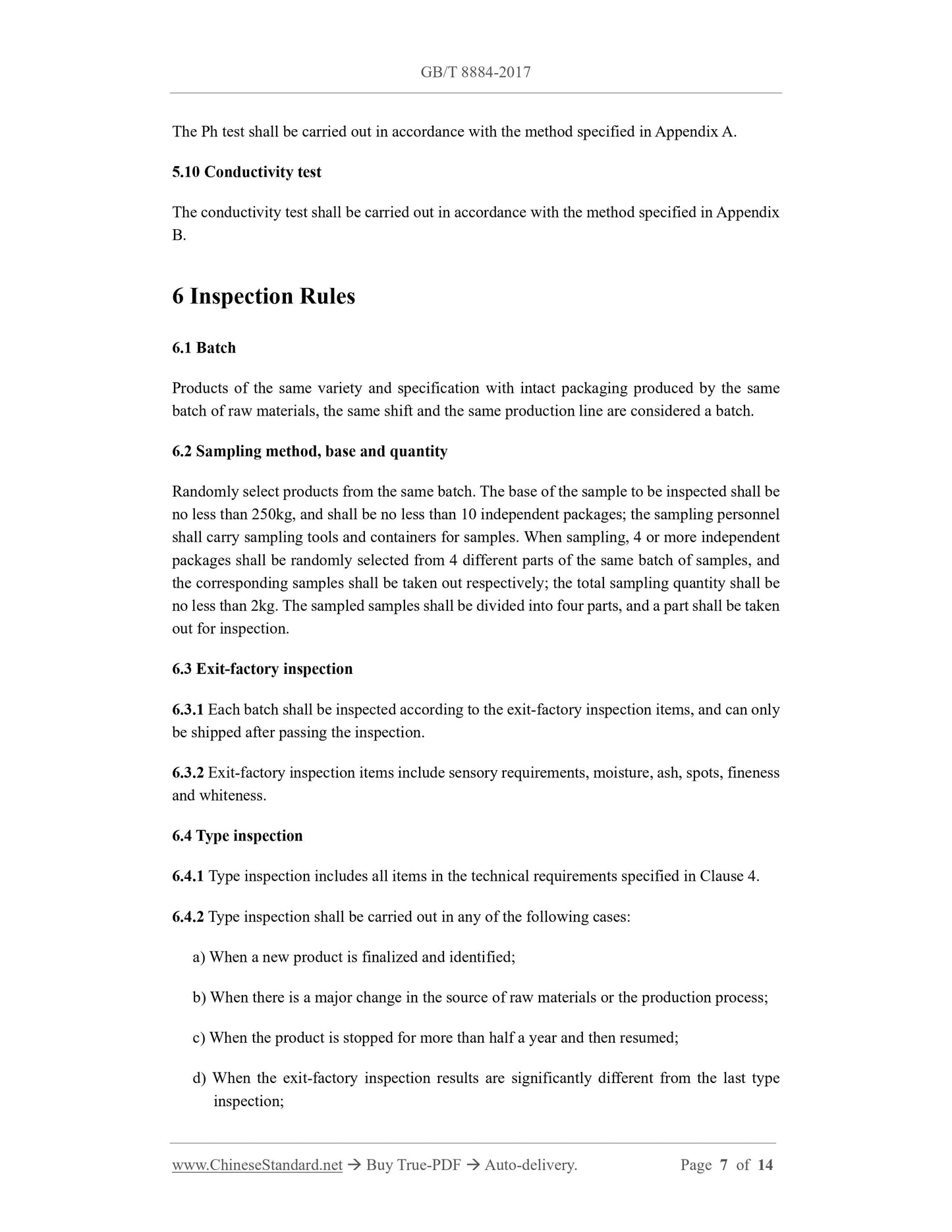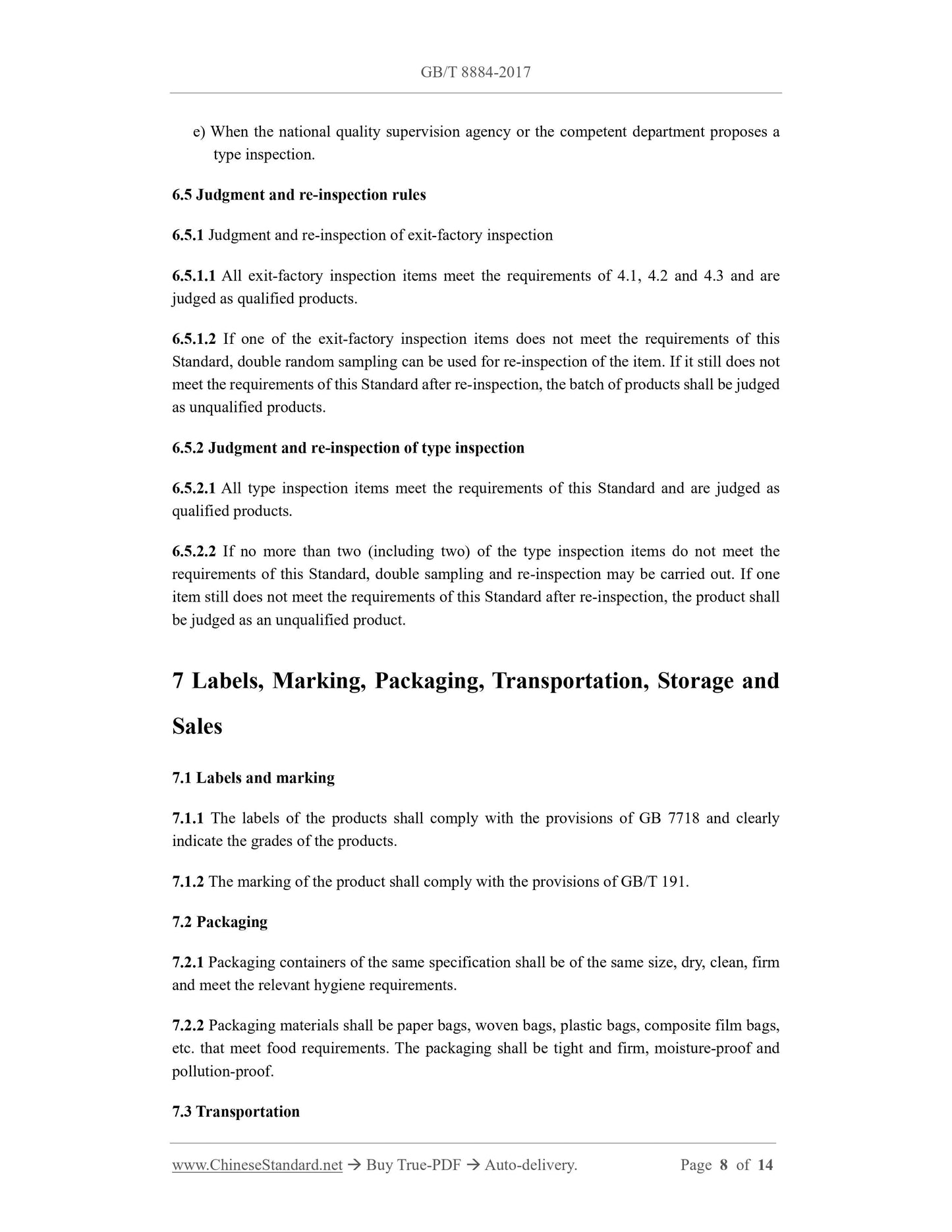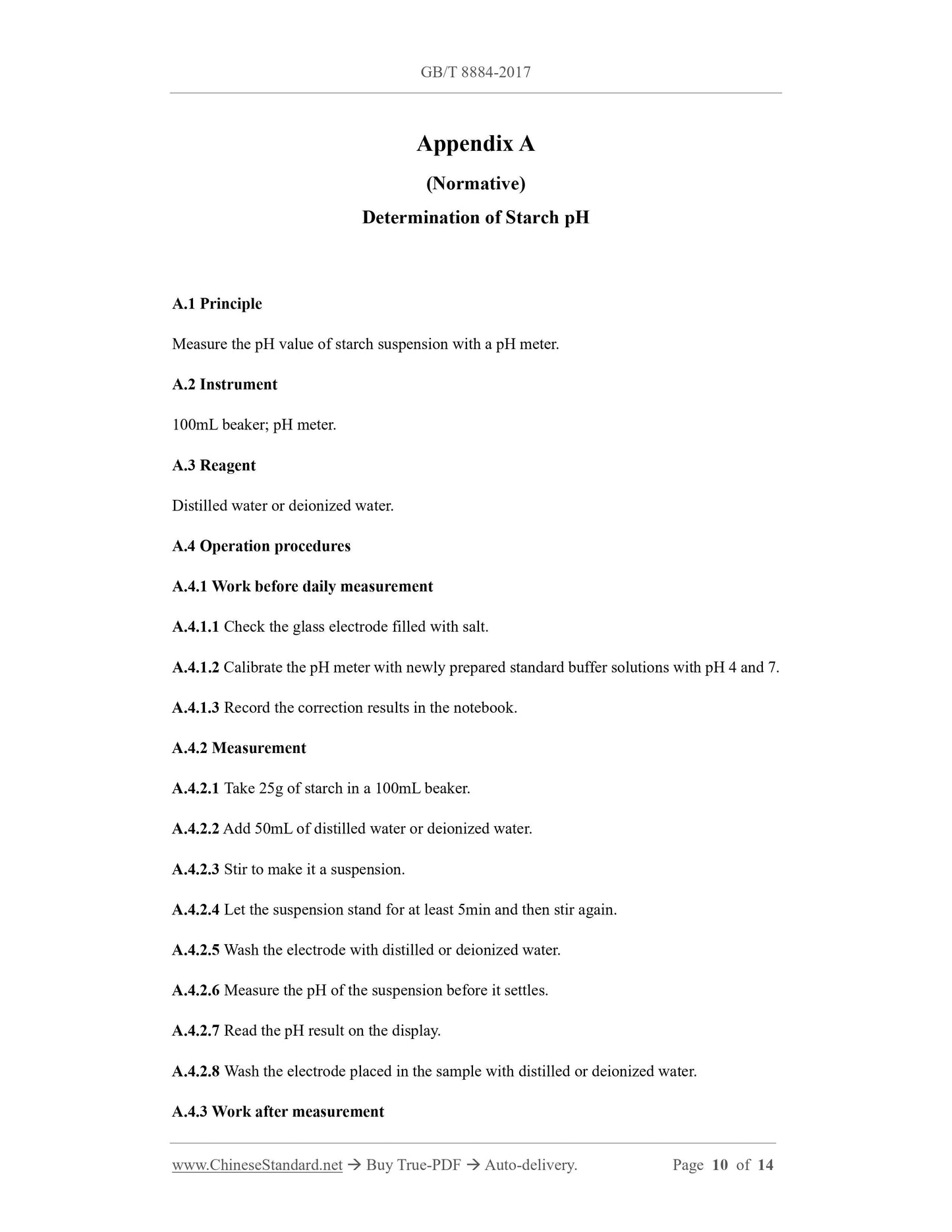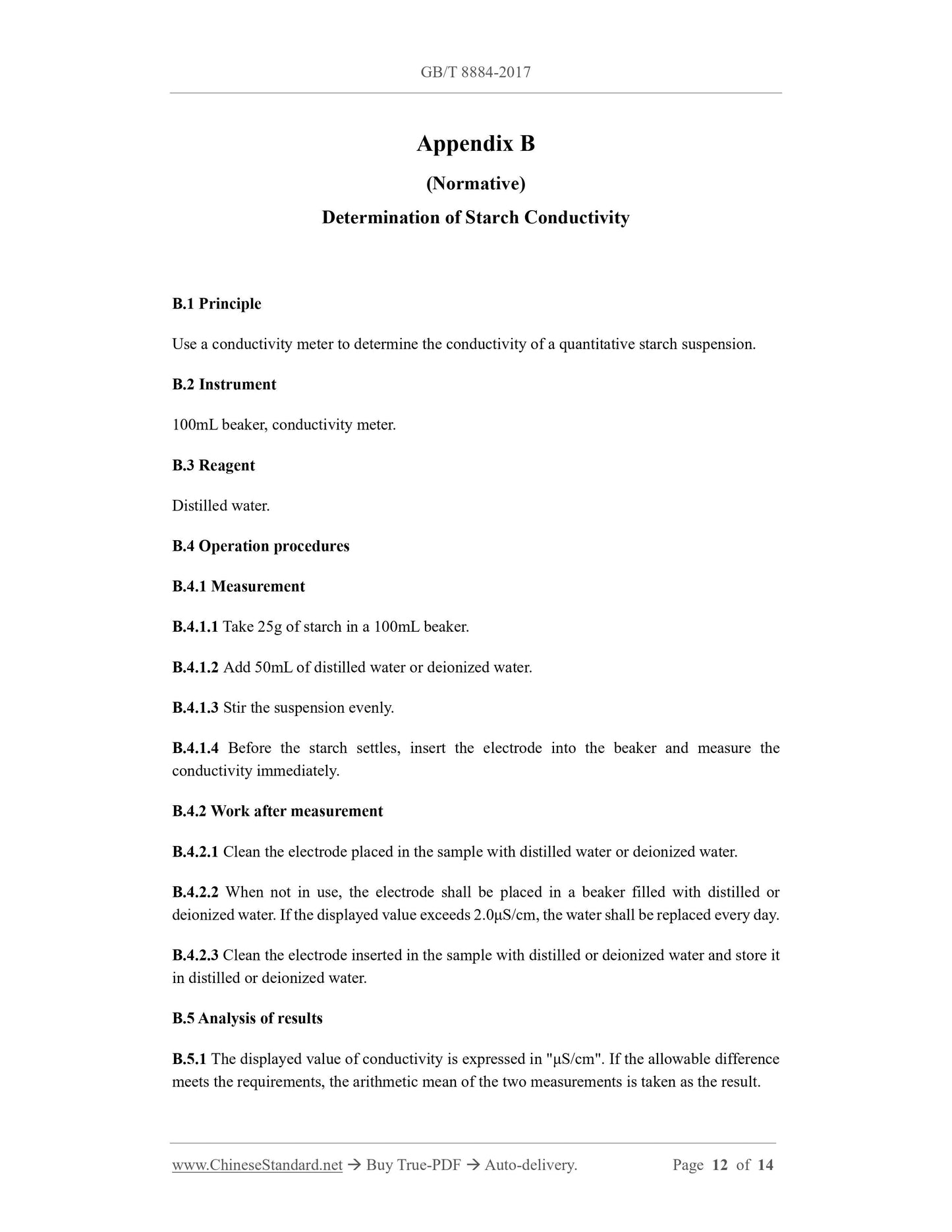1
/
of
7
www.ChineseStandard.us -- Field Test Asia Pte. Ltd.
GB/T 8884-2017 English PDF (GB/T8884-2017)
GB/T 8884-2017 English PDF (GB/T8884-2017)
Regular price
$185.00
Regular price
Sale price
$185.00
Unit price
/
per
Shipping calculated at checkout.
Couldn't load pickup availability
GB/T 8884-2017: [Including 2024XG1] Edible potato starch
Delivery: 9 seconds. Download (and Email) true-PDF + Invoice.Get Quotation: Click GB/T 8884-2017 (Self-service in 1-minute)
Newer / historical versions: GB/T 8884-2017
Preview True-PDF
Scope
This Standard specifies the technical requirements, inspection methods, inspection rules,acceptance rules, and requirements for labeling, marking, packaging, transportation, storage
and sales of edible potato starch.
This Standard applies to edible starch produced from potatoes as raw materials.
Basic Data
| Standard ID | GB/T 8884-2017 (GB/T8884-2017) |
| Description (Translated English) | [Including 2024XG1] Edible potato starch |
| Sector / Industry | National Standard (Recommended) |
| Classification of Chinese Standard | X11 |
| Classification of International Standard | 67.180.20 |
| Word Count Estimation | 10,127 |
| Date of Issue | 2017-12-29 |
| Date of Implementation | 2018-07-01 |
| Issuing agency(ies) | General Administration of Quality Supervision, Inspection and Quarantine of the People's Republic of China, Standardization Administration of the People's Republic of China |
Share
